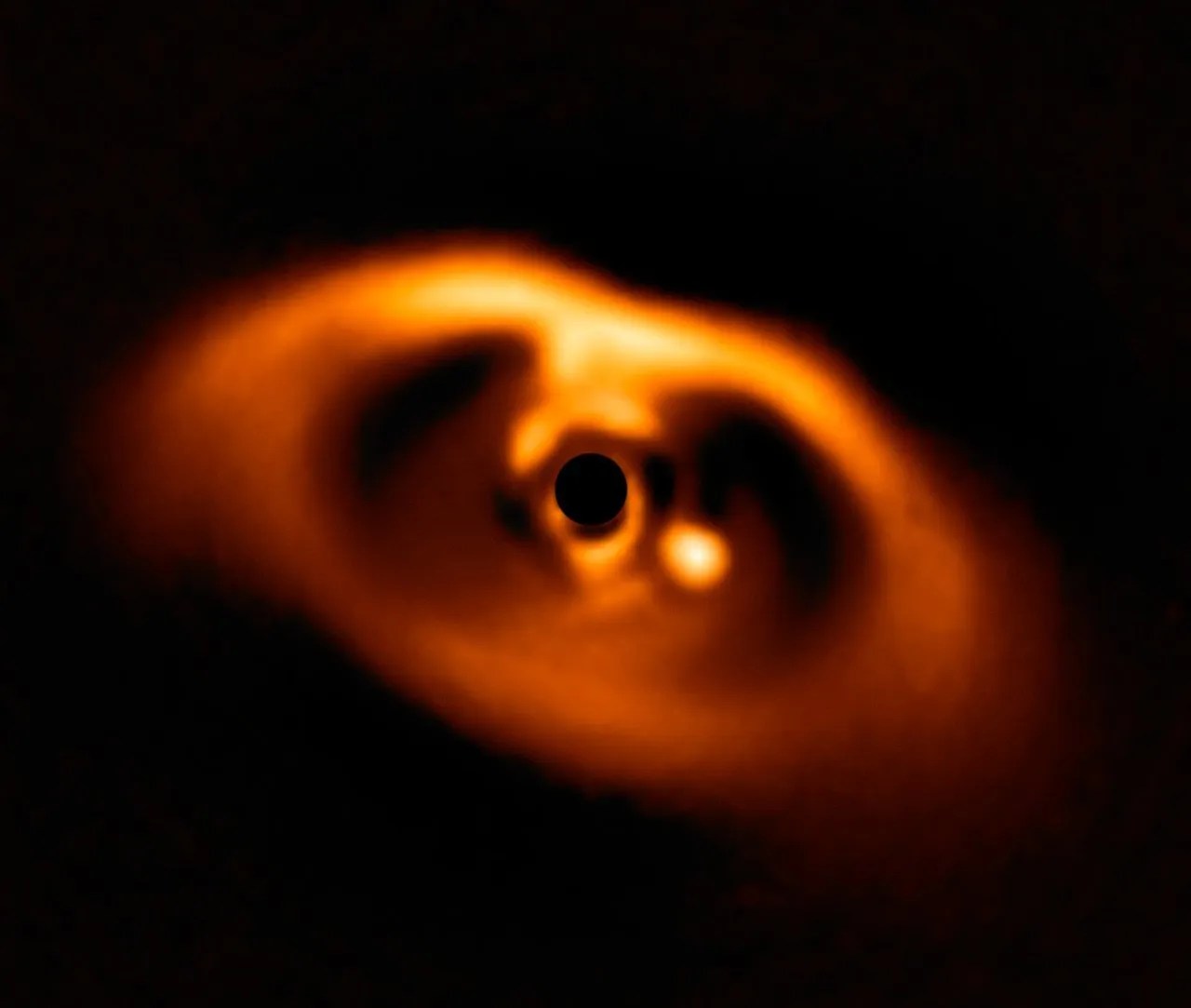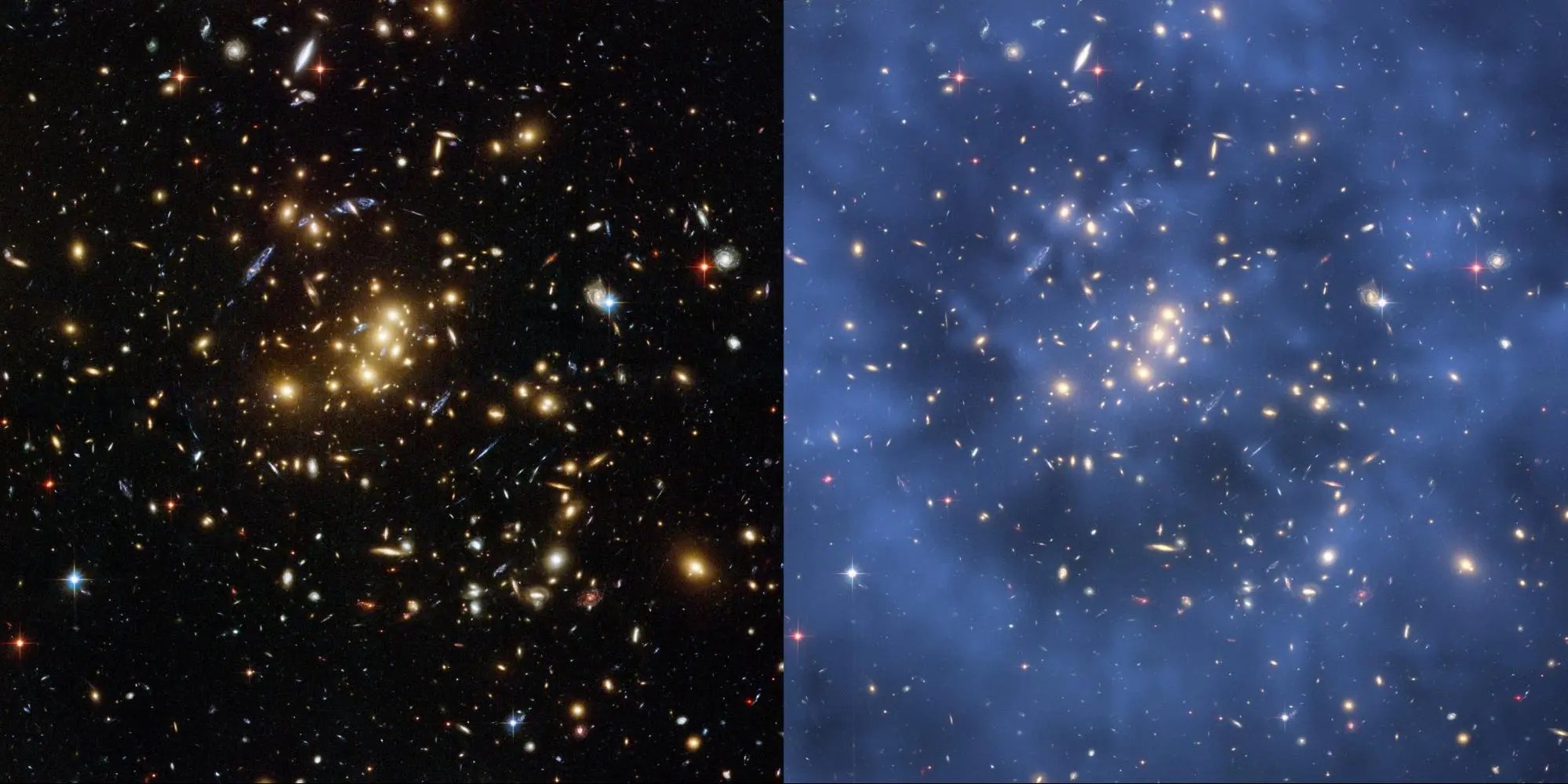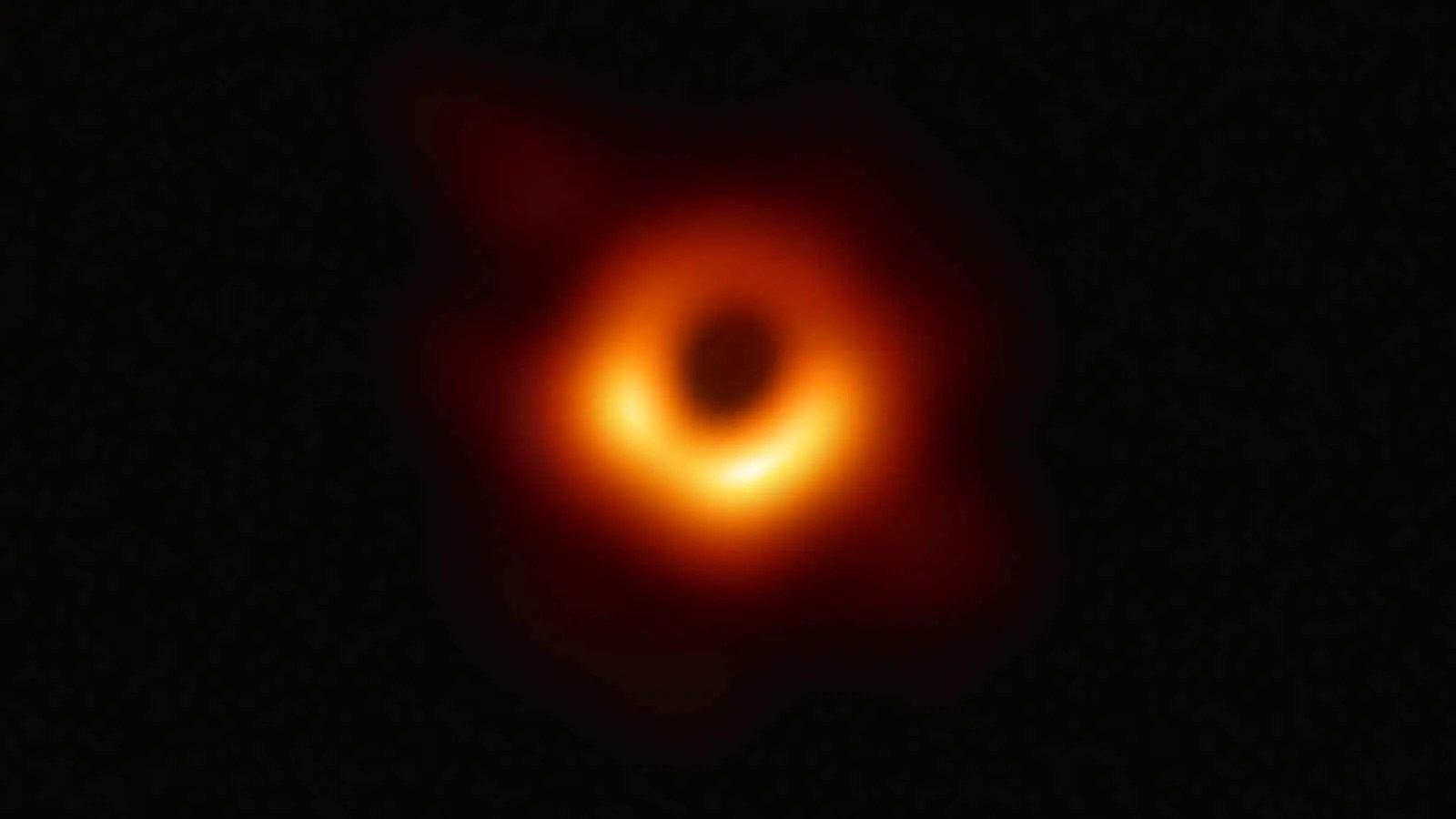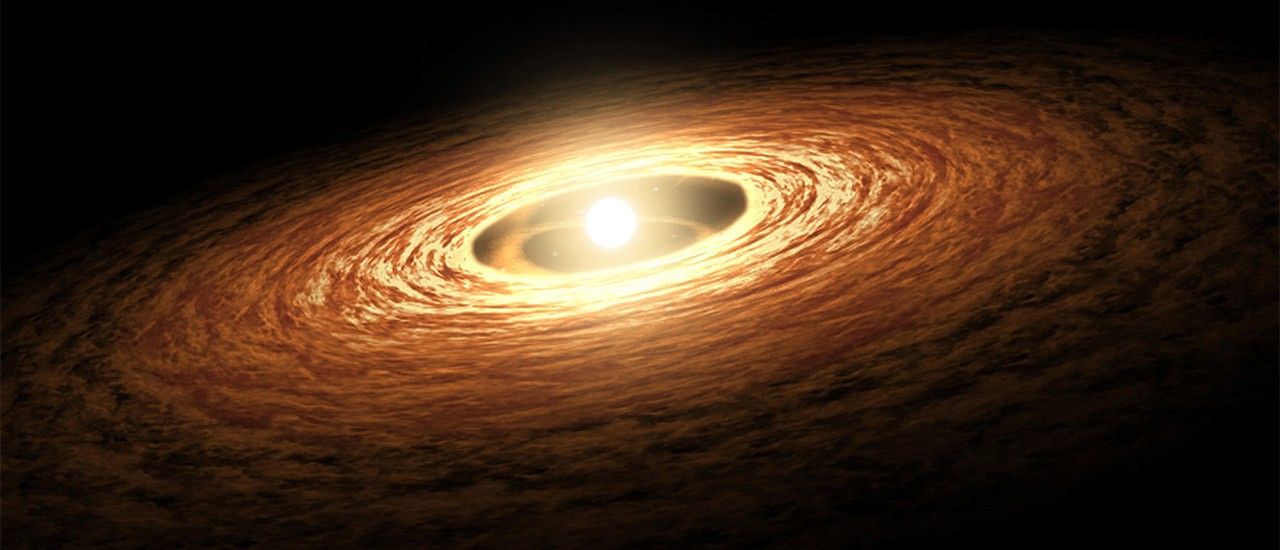The universe is everything. It includes all of space, and all the matter and energy that space contains. It even includes time itself and, of course, it includes you.
Earth and the Moon are part of the universe, as are the other planets and their many dozens of moons. Along with asteroids and comets, the planets orbit the Sun. The Sun is one among hundreds of billions of stars in the Milky Way galaxy, and most of those stars have their own planets, known as exoplanets.
The Milky Way is but one of billions of galaxies in the observable universe — all of them, including our own, are thought to have supermassive black holes at their centers. All the stars in all the galaxies and all the other stuff that astronomers can’t even observe are all part of the universe. It is, simply, everything.

Though the universe may seem a strange place, it is not a distant one. Wherever you are right now, outer space is only 62 miles (100 kilometers) away. Day or night, whether you’re indoors or outdoors, asleep, eating lunch or dozing off in class, outer space is just a few dozen miles above your head. It’s below you too. About 8,000 miles (12,800 kilometers) below your feet — on the opposite side of Earth — lurks the unforgiving vacuum and radiation of outer space.
In fact, you’re technically in space right now. Humans say “out in space” as if it’s there and we’re here, as if Earth is separate from the rest of the universe. But Earth is a planet, and it’s in space and part of the universe just like the other planets. It just so happens that things live here and the environment near the surface of this particular planet is hospitable for life as we know it. Earth is a tiny, fragile exception in the cosmos. For humans and the other things living on our planet, practically the entire cosmos is a hostile and merciless environment.

How old is Earth?
Our planet, Earth, is an oasis not only in space, but in time. It may feel permanent, but the entire planet is a fleeting thing in the lifespan of the universe. For nearly two-thirds of the time since the universe began, Earth did not even exist. Nor will it last forever in its current state. Several billion years from now, the Sun will expand, swallowing Mercury and Venus, and filling Earth’s sky. It might even expand large enough to swallow Earth itself. It’s difficult to be certain. After all, humans have only just begun deciphering the cosmos.
While the distant future is difficult to accurately predict, the distant past is slightly less so. By studying the radioactive decay of isotopes on Earth and in asteroids, scientists have learned that our planet and the solar system formed around 4.6 billion years ago.
How old is the universe?
The universe, on the other hand, appears to be about 13.8 billion years old. Scientists arrived at that number by measuring the ages of the oldest stars and the rate at which the universe expands. They also measured the expansion by observing the Doppler shift in light from galaxies, almost all of which are traveling away from us and from each other. The farther the galaxies are, the faster they’re traveling away. One might expect gravity to slow the galaxies’ motion from one another, but instead they’re speeding up and scientists don’t know why. In the distant future, the galaxies will be so far away that their light will not be visible from Earth.
Put another way, the matter, energy and everything in the universe (including space itself) was more compact last Saturday than it is today.
Put another way, the matter, energy and everything in the universe (including space itself) was more compact last Saturday than it is today. The same can be said about any time in the past — last year, a million years ago, a billion years ago. But the past doesn’t go on forever.
By measuring the speed of galaxies and their distances from us, scientists have found that if we could go back far enough, before galaxies formed or stars began fusing hydrogen into helium, things were so close together and hot that atoms couldn’t form and photons had nowhere to go. A bit farther back in time, everything was in the same spot. Or really the entire universe (not just the matter in it) was one spot.
Don't spend too much time considering a mission to visit the spot where the universe was born, though, as a person cannot visit the place where the Big Bang happened. It's not that the universe was a dark, empty space and an explosion happened in it from which all matter sprang forth. The universe didn’t exist. Space didn’t exist. Time is part of the universe and so it didn’t exist. Time, too, began with the big bang. Space itself expanded from a single point to the enormous cosmos as the universe expanded over time.
What is the universe made of?
The universe contains all the energy and matter there is. Much of the observable matter in the universe takes the form of individual atoms of hydrogen, which is the simplest atomic element, made of only a proton and an electron (if the atom also contains a neutron, it is instead called deuterium). Two or more atoms sharing electrons is a molecule. Many trillions of atoms together is a dust particle. Smoosh a few tons of carbon, silica, oxygen, ice, and some metals together, and you have an asteroid. Or collect 333,000 Earth masses of hydrogen and helium together, and you have a Sun-like star.

For the sake of practicality, humans categorize clumps of matter based on their attributes. Galaxies, star clusters, planets, dwarf planets, rogue planets, moons, rings, ringlets, comets, meteorites, raccoons — they’re all collections of matter exhibiting characteristics different from one another but obeying the same natural laws.
Scientists have begun tallying those clumps of matter and the resulting numbers are pretty wild. Our home galaxy, the Milky Way, contains at least 100 billion stars, and the observable universe contains at least 100 billion galaxies. If galaxies were all the same size, that would give us 10 thousand billion billion (or 10 sextillion) stars in the observable universe.
But the universe also seems to contain a bunch of matter and energy that we can’t see or directly observe. All the stars, planets, comets, sea otters, black holes and dung beetles together represent less than 5 percent of the stuff in the universe. About 27 percent of the remainder is dark matter, and 68 percent is dark energy, neither of which are even remotely understood. The universe as we understand it wouldn’t work if dark matter and dark energy didn’t exist, and they’re labeled “dark” because scientists can’t seem to directly observe them. At least not yet.

How has our view of the universe changed over time?
Human understanding of what the universe is, how it works and how vast it is has changed over the ages. For countless lifetimes, humans had little or no means of understanding the universe. Our distant ancestors instead relied upon myth to explain the origins of everything. Because our ancestors themselves invented them, the myths reflect human concerns, hopes, aspirations or fears rather than the nature of reality.
Several centuries ago, however, humans began to apply mathematics, writing and new investigative principles to the search for knowledge. Those principles were refined over time, as were scientific tools, eventually revealing hints about the nature of the universe. Only a few hundred years ago, when people began systematically investigating the nature of things, the word “scientist” didn’t even exist (researchers were instead called “natural philosophers” for a time). Since then, our knowledge of the universe has repeatedly leapt forward. It was only about a century ago that astronomers first observed galaxies beyond our own, and only a half-century has passed since humans first began sending spacecraft to other worlds.
In the span of a single human lifetime, space probes have voyaged to the outer solar system and sent back the first up-close images of the four giant outermost planets and their countless moons; rovers wheeled along the surface on Mars for the first time; humans constructed a permanently crewed, Earth-orbiting space station; and the first large space telescopes delivered jaw-dropping views of more distant parts of the cosmos than ever before. In the early 21st century alone, astronomers discovered thousands of planets around other stars, detected gravitational waves for the first time and produced the first image of a black hole.

With ever-advancing technology and knowledge, and no shortage of imagination, humans continue to lay bare the secrets of the cosmos. New insights and inspired notions aid in this pursuit, and also spring from it. We have yet to send a space probe to even the nearest of the billions upon billions of other stars in the galaxy. Humans haven’t even explored all the worlds in our own solar system. In short, most of the universe that can be known remains unknown.
The universe is nearly 14 billion years old, our solar system is 4.6 billion years old, life on Earth has existed for maybe 3.8 billion years, and humans have been around for only a few hundred thousand years. In other words, the universe has existed roughly 56,000 times longer than our species has. By that measure, almost everything that’s ever happened did so before humans existed. So of course we have loads of questions — in a cosmic sense, we just got here.
Our first few decades of exploring our own solar system are merely a beginning. From here, just one human lifetime from now, our understanding of the universe and our place in it will have undoubtedly grown and evolved in ways we can today only imagine.



























